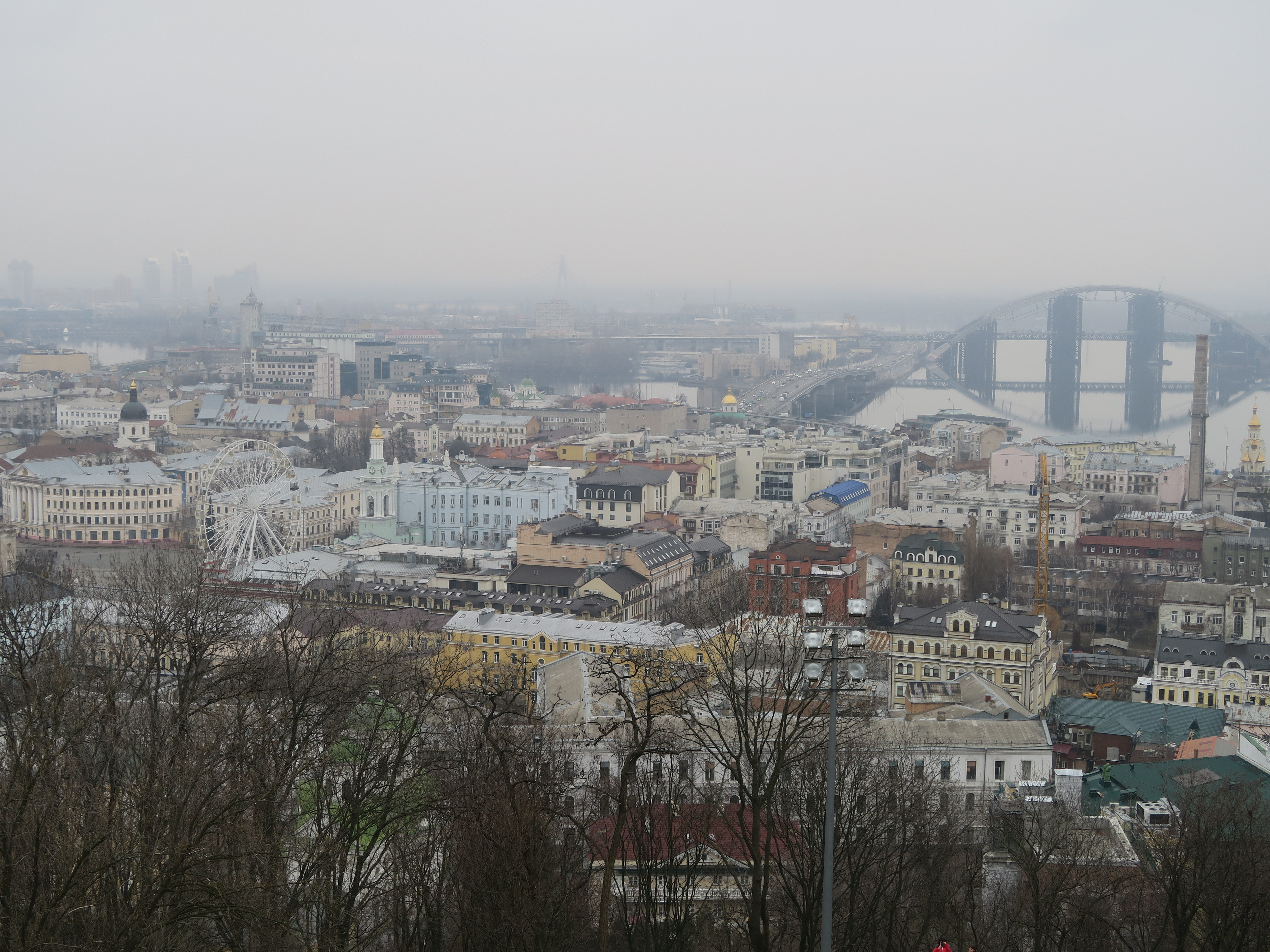- The Kiev Metro system transports over one million people each day.
- There are three main lines, and a single ride costs ₴8, or Ukrainian hryvnia (abbreviated UAH).
- Almost everything is clearly labeled in both Ukrainian and English.
- Visit INSIDER’s homepage for more stories.
If you really want to get a taste of local life when you travel, it’s always a good idea to try out the public transit. I typically take the city subway or metro when I’m on a trip since it’s cheaper, gives me a taste of the culture, and it can often be faster than sitting in traffic.
I took the metro in Kiev, Ukraine, and, although I was a bit apprehensive because of the language barrier, I am so glad I gave it a try. It was simple to use and a great experience. Taking the metro was a wonderful chance to see what daily life is like in Kiev and also experience unbelievably deep subway stations. In fact, Kiev is home to Arsenalna station, which claims to be the deepest in the world.
Here’s what it was like getting around Kiev, Ukraine, by its subway system.
Stations are marked with a green “M,” standing for Metro.
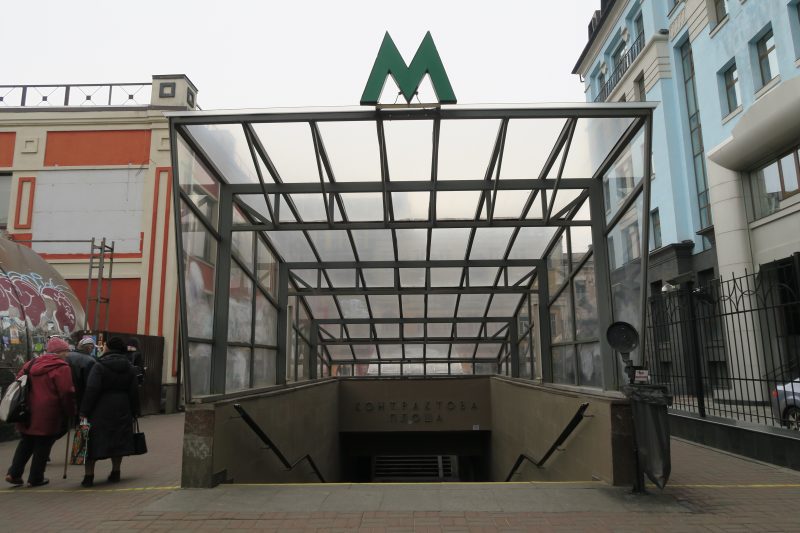
I usually relied on Google Maps to find the general area of where to grab the train. The city is not on a grid system and has many hills, so this made it easiest to locate the stations.
Some stations are above ground, but the trains I took were all underground. Also, as a note, trains operate from 6 a.m. until midnight.
Some (not all) of the stations were like mini-malls underneath the ground.
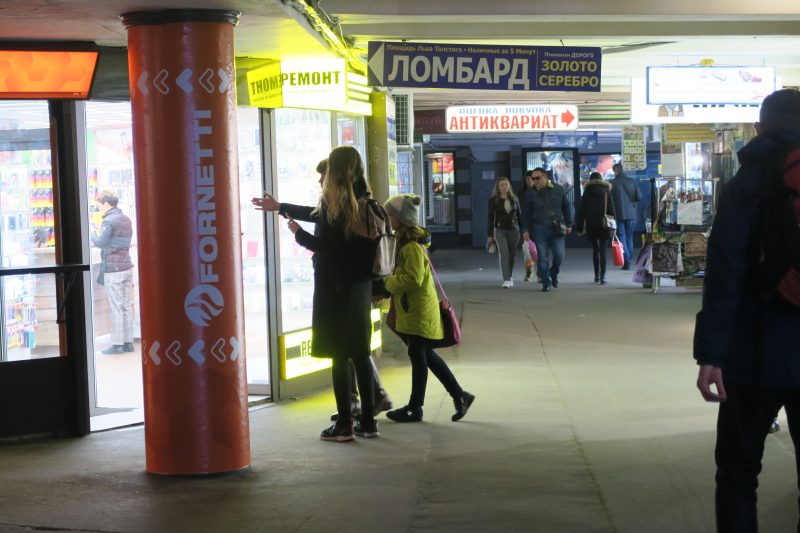
In some of the busier stations, there were so many stores it almost felt like a shopping center with a Metro station attached. These weren't souvenir shops; instead, I found florists, toy shops, newsstands, and grocery stores which locals would stop in before or after taking the train.
Stations situated on larger intersections also acted as the safe walkways from one side of the street to another, so I always found the underground area to be busy.
Even with stores and plenty of people, I found the walkways of the stations to be a little dimly lit. Still, I never felt unsafe.
I traveled in Kiev on my own and didn't ever feel uncomfortable, though I still remained alert and had a good handle on my belongings. I found that the cleanliness and safety in the trains there was about on par with what I've experienced in places like New York City.
After navigating the underground pathways to the subway entrance, there were sometimes doors to pass through.
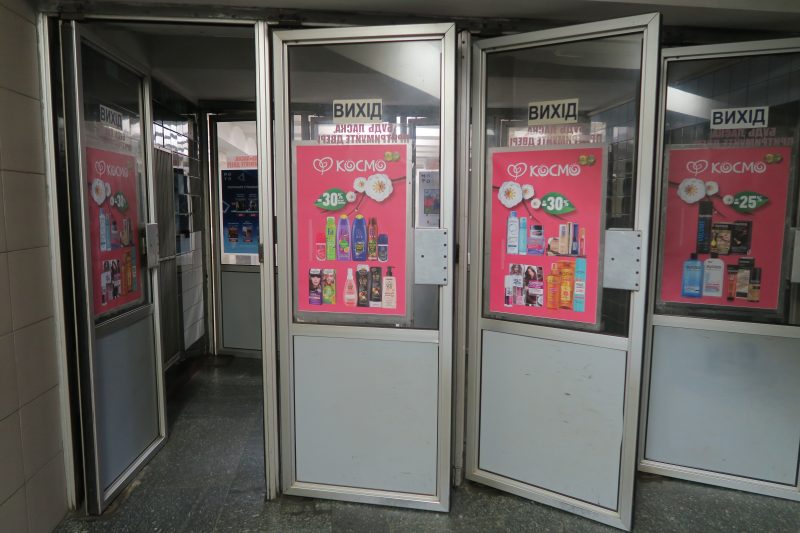
One set of doors (labeled вихід) was for entering, and the other (labeled Вхід) was for exiting. These labels were in Ukrainian and not translated to English.
The doors do swing both ways, although I occasionally saw people going in or out the wrong way.
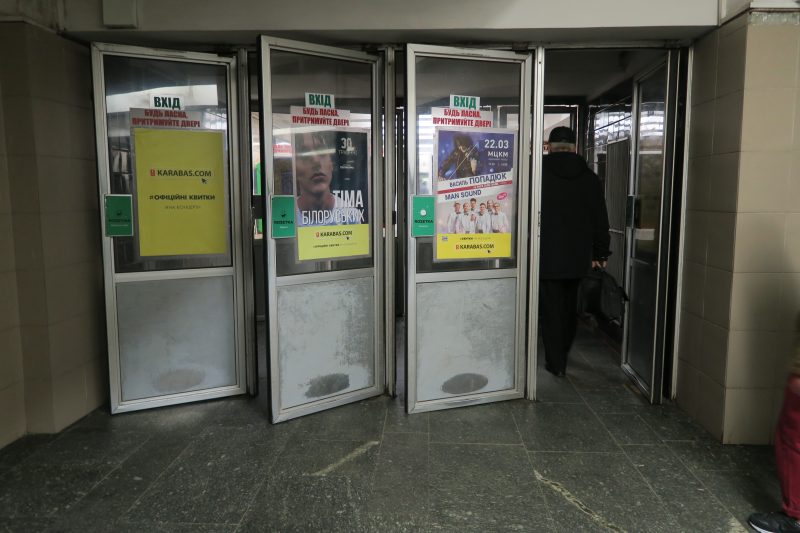
During busy times this would be much more difficult, though, so it's best to enter correctly.
Once inside, you have the options to purchase your token or pass.
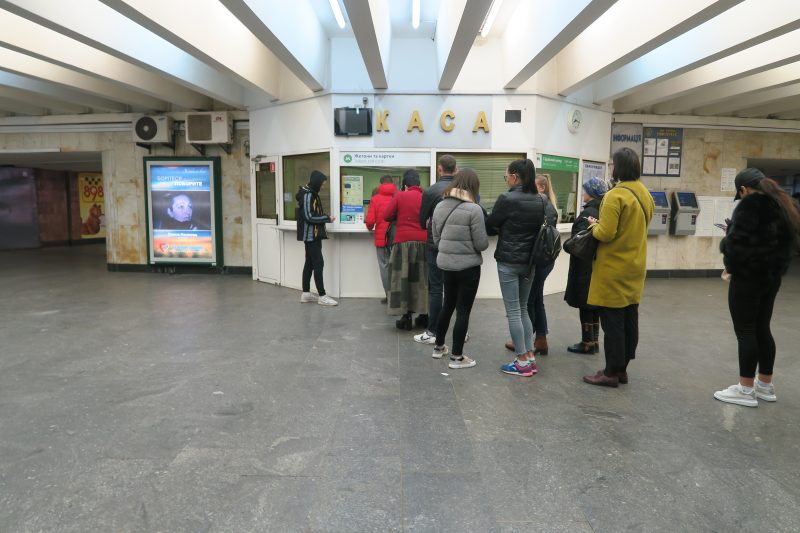
Although the city does offer top-up cards, as a tourist in Kiev for only a few days it made sense for me to purchase individual tokens. These cost ₴8, or Ukrainian hryvnia (abbreviated UAH).
I had the option to purchase my token from the counter or to use an automated machine.
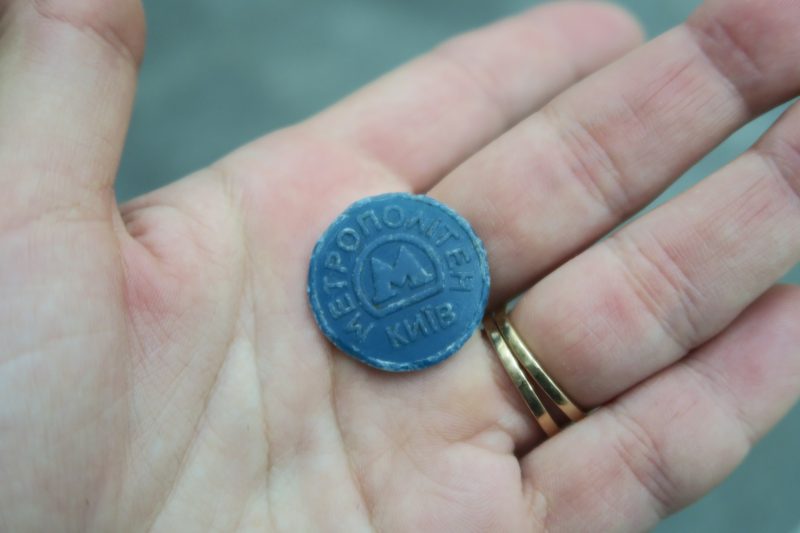
During my first trip on the Ukrainian Metro, I got in line at the kiosk to purchase a single green token. This was a great option when I had larger bills or a bunch of small coins.
Because I knew no Ukrainian, I communicated mostly by holding up my pointer finger to indicate "one ticket," which was always understood. I did, however, have Google Translate at the ready, just in case.
At the machines, I could offer a ₴10 bill and in return, I'd get a token and a ₴2 coin.
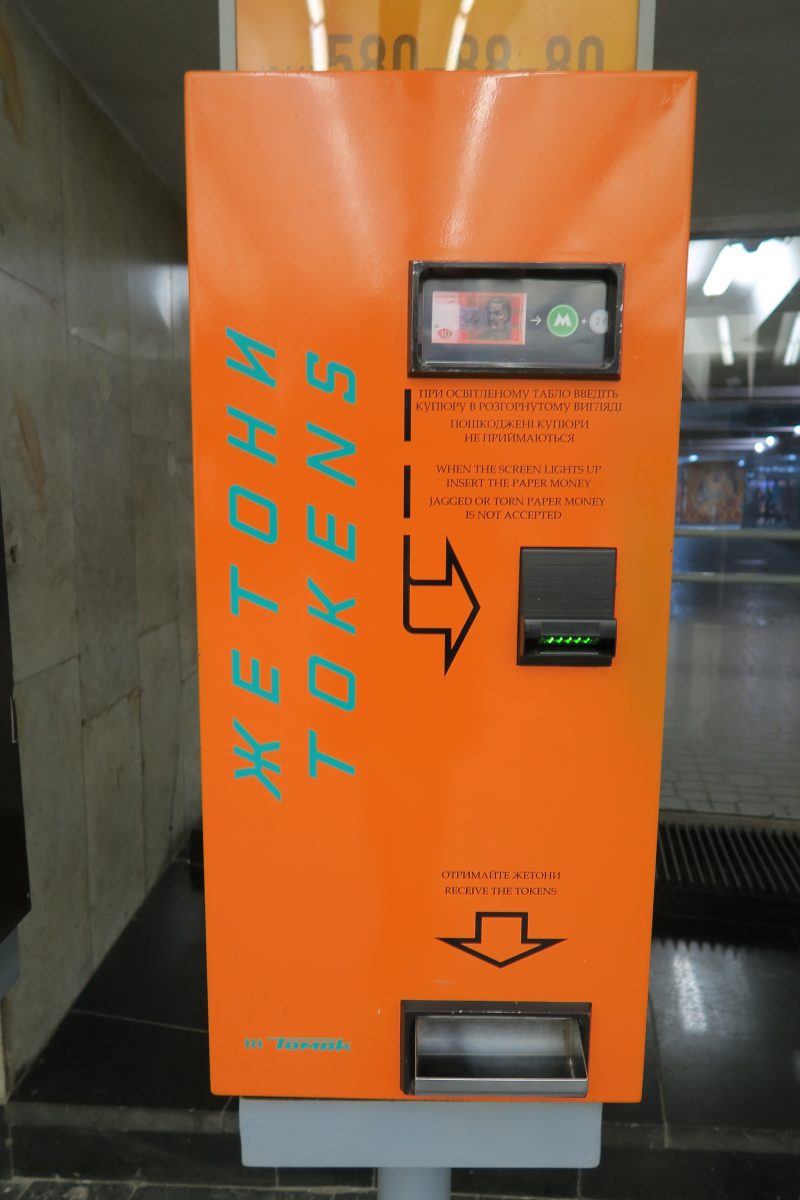
The automated token machines never had a line of people at them, so it seemed to be the best option for people in a hurry who also had just the right amount of money. It didn't appear to accept any other bill, though, so it will really only be helpful for those who already have ₴10 exactly.
Then, it was time for the entrance — a lineup of turnstiles.
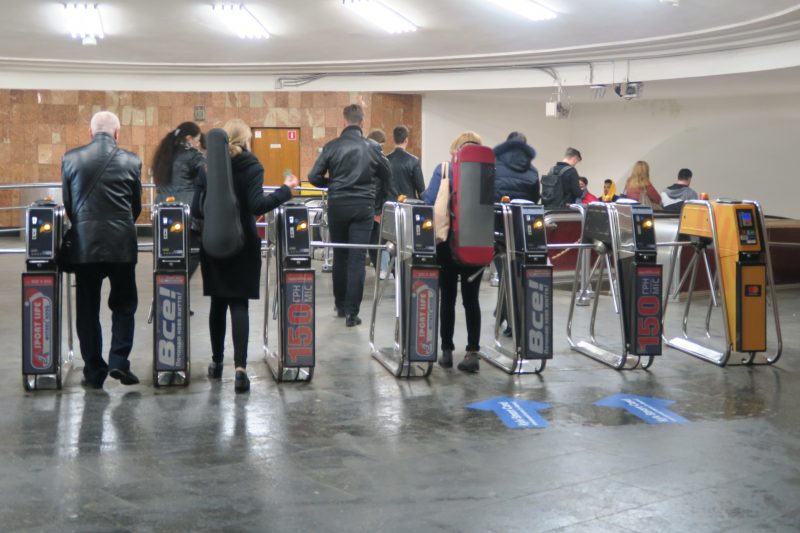
At any station I visited, I always saw a security guard there.
The subway stations in Kiev are a whole world underneath the ground.
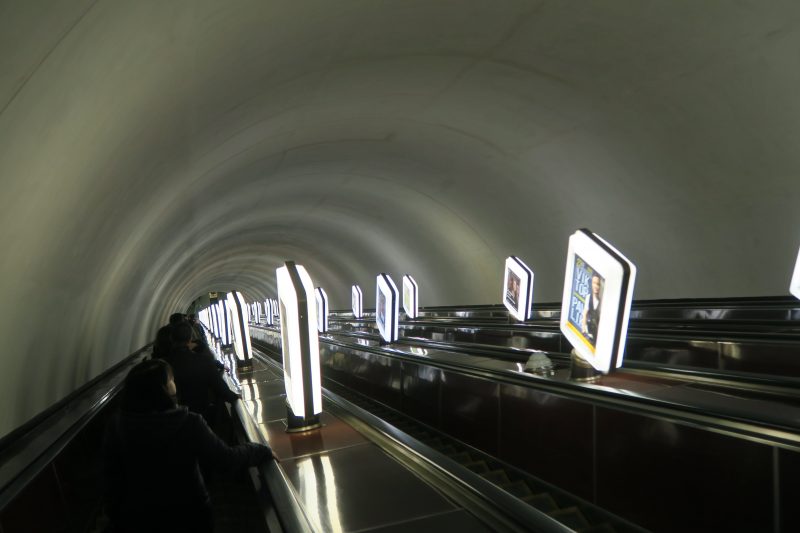
Kiev is home to one of the deepest subway stations in the world, Arsenalna station, which goes down 346 feet. But even their other stations seemed to go underground quite a bit. I was surprised every time I went into the Metro and had to take a long escalator ride even further underground, sometimes for a few minutes.
Although I got onto the subway platforms by escalator, many stations didn't appear to have elevators, making the city not incredibly wheelchair accessible.
Platforms are clearly labeled with signs overhead to indicate where the arriving trains travel.
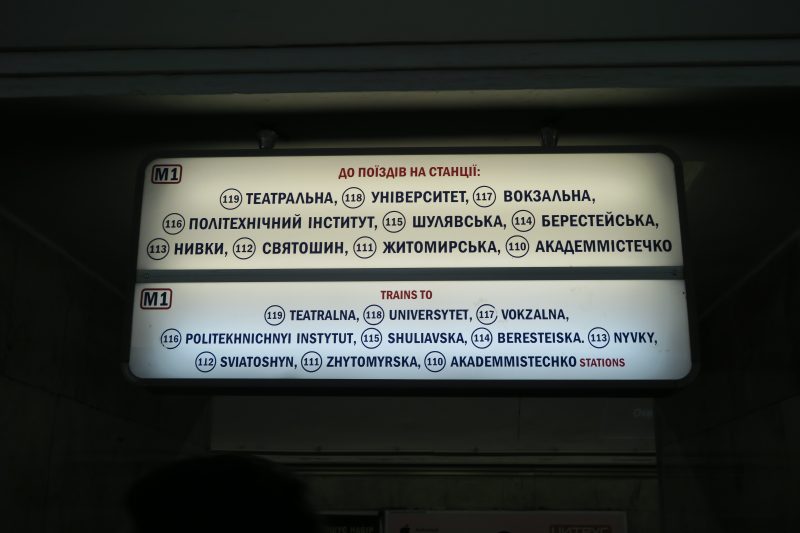
These brightly lit signs are situated in the middle of the platform with arrows pointing to either side. These were typically in Ukrainian, but if I turned to face one track or the other I could see additional signs written in English. Signs indicated the next few stops of the approaching train, including the station number next to the name.
Trains came pretty regularly, and I don’t think I ever waited more than six or seven minutes before one arrived.
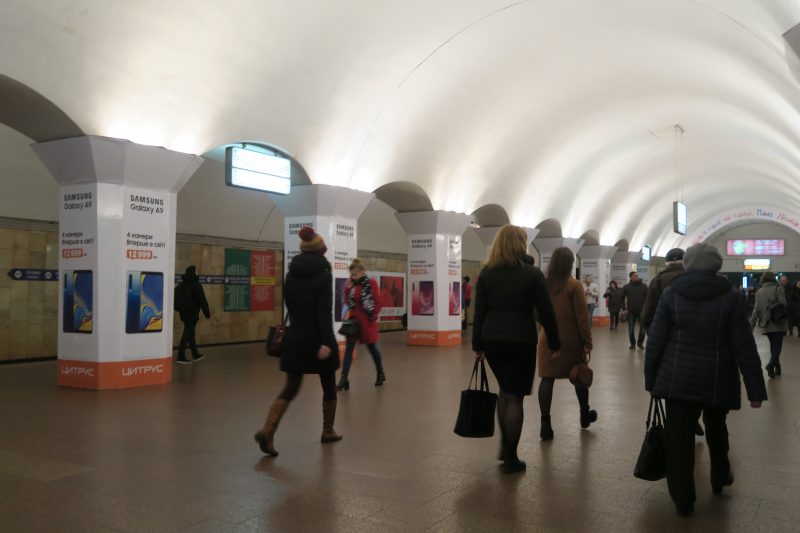
Things seemed to move pretty smoothly.
The trains had announcements which clearly stated the next stop.
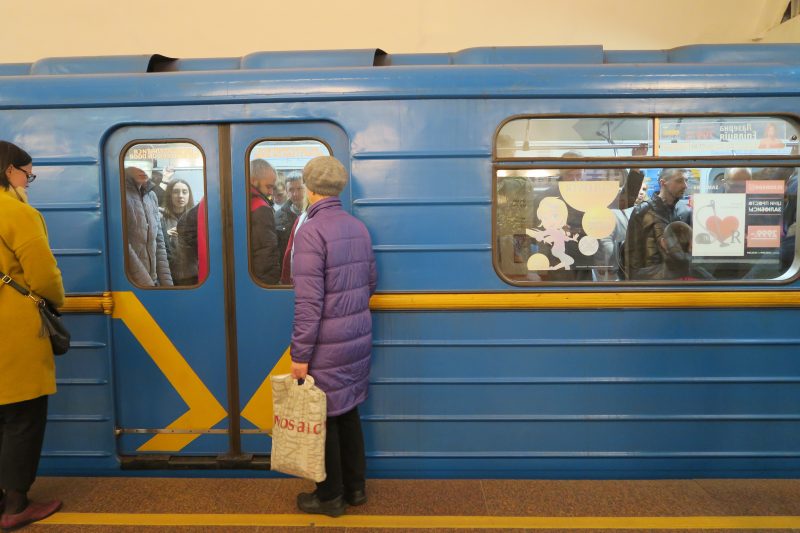
Once I got on the train car an announcement in Ukrainian would mention the next stop, and it would then state this in English. While the train cars didn't always look incredibly modern, in my opinion, I never felt confused about which stop was coming soon.
Everything was pretty straightforward, except for transfers.
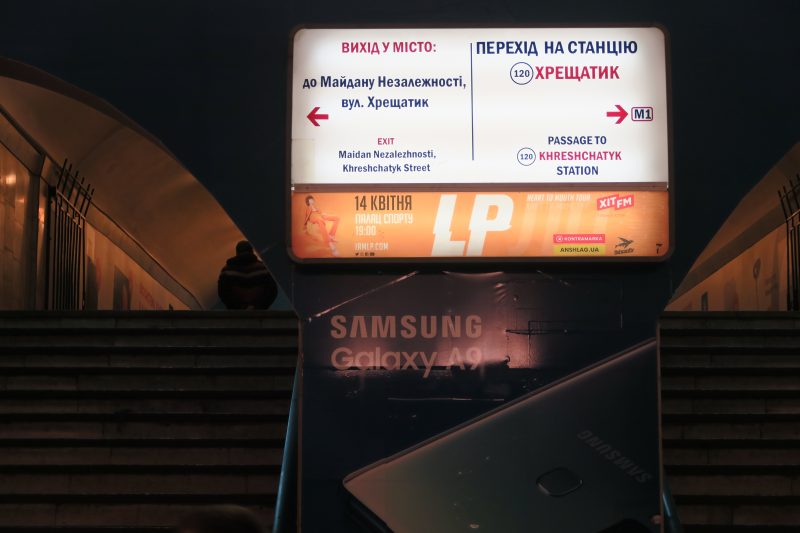
Overall, I had no issues figuring out how to get from Point A to Point B with the Kiev Metro - except for when I transferred a few times underground.
Transfers from one line to another are included in a single token, and transfer information was labeled on train platforms.
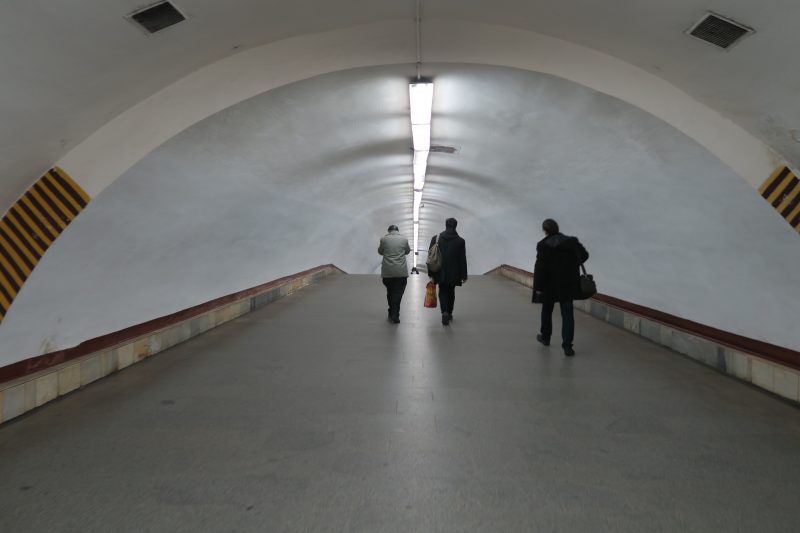
But I remember one particular walkway I traveled on for a few minutes without seeing any signs at all, and it made me second guess if I was headed in the right direction. In the end, I was walking to the correct spot, but I would have felt more confident had there been signs along the way.
I took the train at many points throughout the day, and it was always busy.
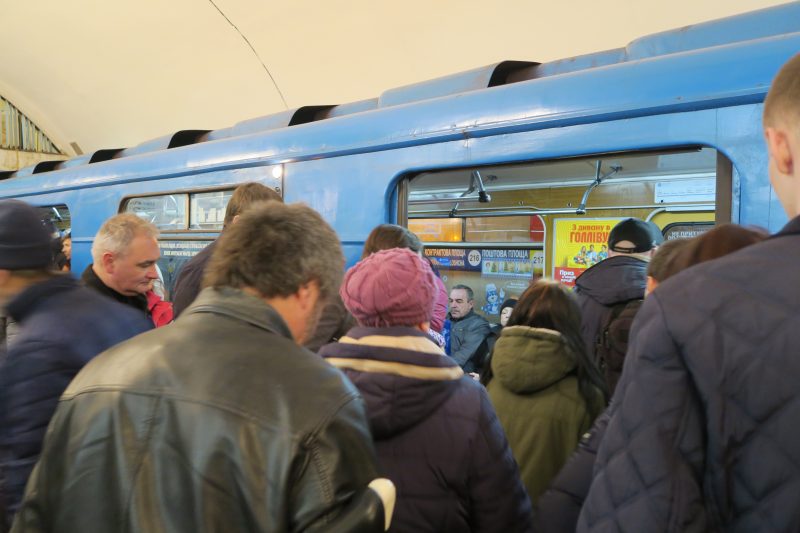
Morning, afternoon, and evening - I took the train at various points throughout the day, and it always seemed to have a lot of riders.
Transporting over 1 million people daily, according to Hosting Kartinok, it's easy to see how the Metro here is a must for anyone wanting to experience Kiev from a local's perspective.
